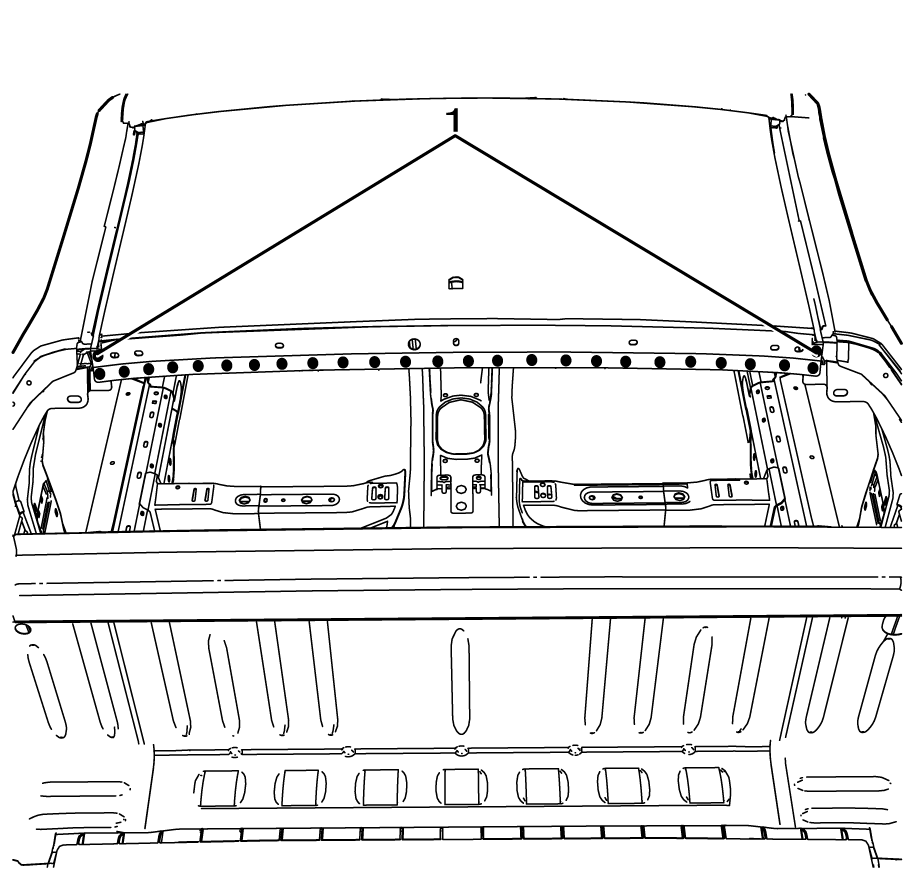Removal Procedure
- Disable the SIR system. Refer to SIR Disabling and Enabling .
- Disconnect the negative battery cable. Refer to Battery Negative Cable Disconnection and Connection .
- Remove the windshield pillar garnish moulding. Refer to Windshield Pillar Garnish Molding Replacement .
- Remove the rear quarter upper trim panel. Refer to Body Side Rear Trim Panel Upper Trim Replacement .
- Remove the body hinge pillar trim panel . Refer to Body Hinge Pillar Trim Panel Replacement .
- Remove the dome lamp assembly. Refer to Dome Lamp Replacement .
- Remove the headliner. Refer to Headlining Trim Panel Replacement .
- Remove the windshield. Refer to Windshield Replacement .
- Remove the rear window. Refer to Rear Window Replacement .
- Remove the roof weld joint reveal moulding. Refer to Roof Weld Joint Reveal Molding Replacement .
- Apply tape to the corners of the panels and adjacent surfaces.
- Remove the sealers and anti-corrosion materials from the repair area, as necessary. Refer to Anti-Corrosion Treatment and Repair .
- Locate, mark and drill out the factory welds attaching the roof outer panel to the vehicle (1). Note the number and location of welds for installation of the service assembly.
- Locate, mark and drill out the factory welds attaching the rear section of the roof to the vehicle (1). Note the number and location of welds for installation of the service assembly.
- Using a suitable tool, cut through the roof outer panel along the inner side of the roof channel (1). Repeat for opposite side.
- Using a suitable tool heat the 'anti-flutter' adhesive between the roof panel and the roof bows (1).
- Cut the 'anti-flutter' adhesive (1) with a suitable tool.
- Remove the roof outer panel from the vehicle.
- Using a suitable tool remove the remaining strip of roof panel (1) from the body side panel assembly. Repeat for the opposite side.
Caution: Refer to Approved Equipment for Collision Repair Caution in the Preface section.
Caution: Refer to Foam Sound Deadeners Caution in the Preface section.
Caution: Refer to Battery Disconnect Caution in the Preface section.
Important: The roof panel is attached to the steel roof structure with beads of adhesive on the sides and spot-welds on the side rail, windshield and back-glass flanges. Replacement of the roof panel can be performed using conventional procedures, however, the windshield and back rear glass must be removed.
Important: The roof outer panel is secured to the body side panel with adhesive and spot welds, it cannot be removed by removing the spot welds alone.

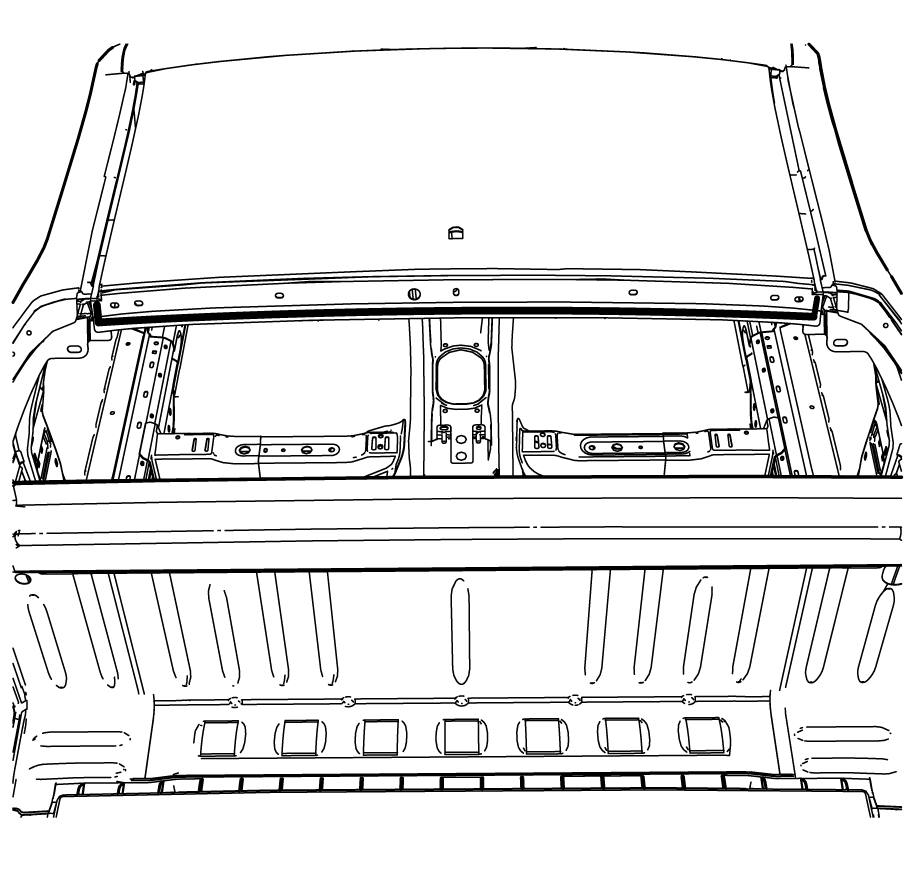
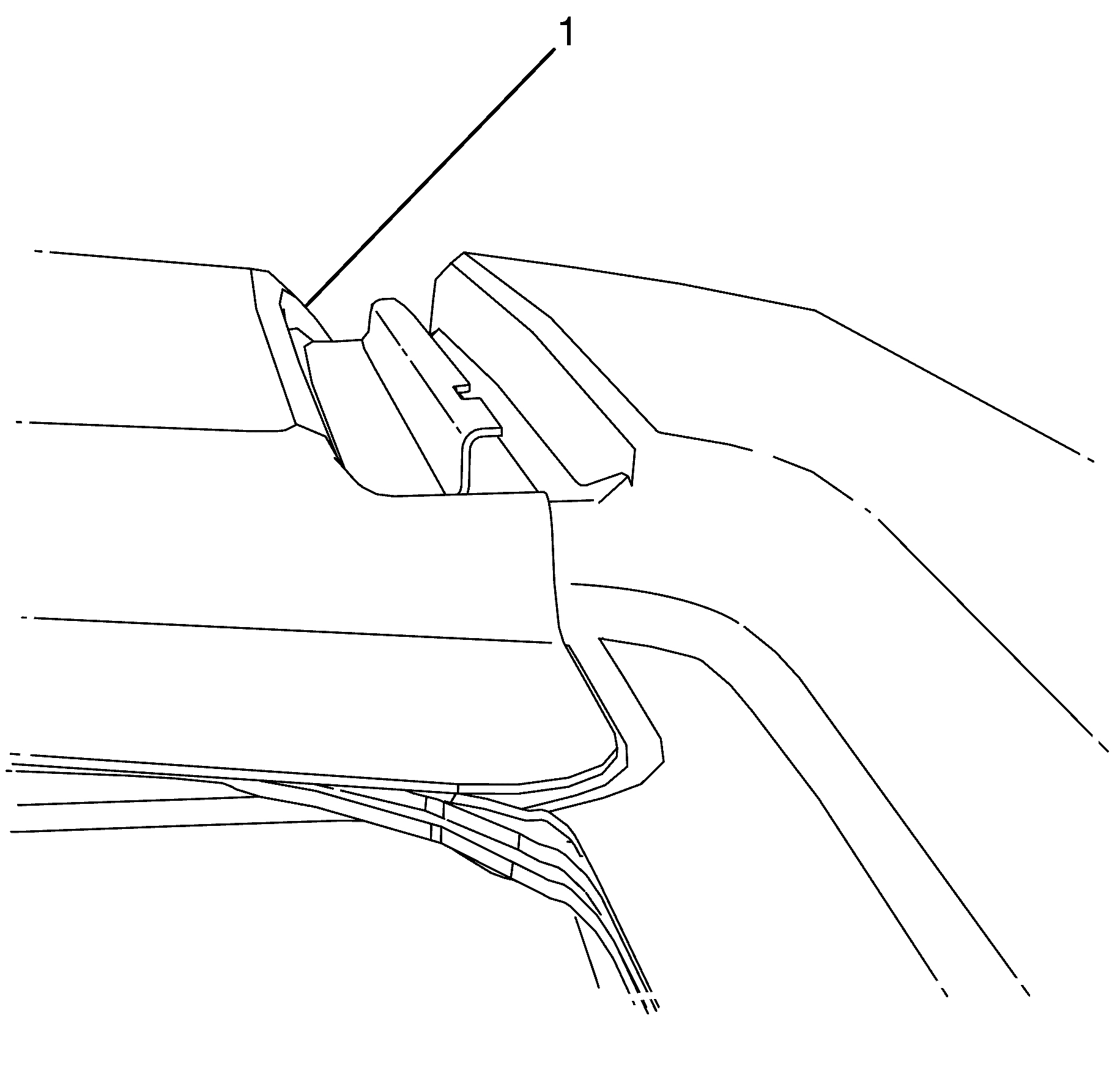
Important: Take care when cutting along the roof outer panel to protect adjacent panels. Cut inboard of the roof structure.
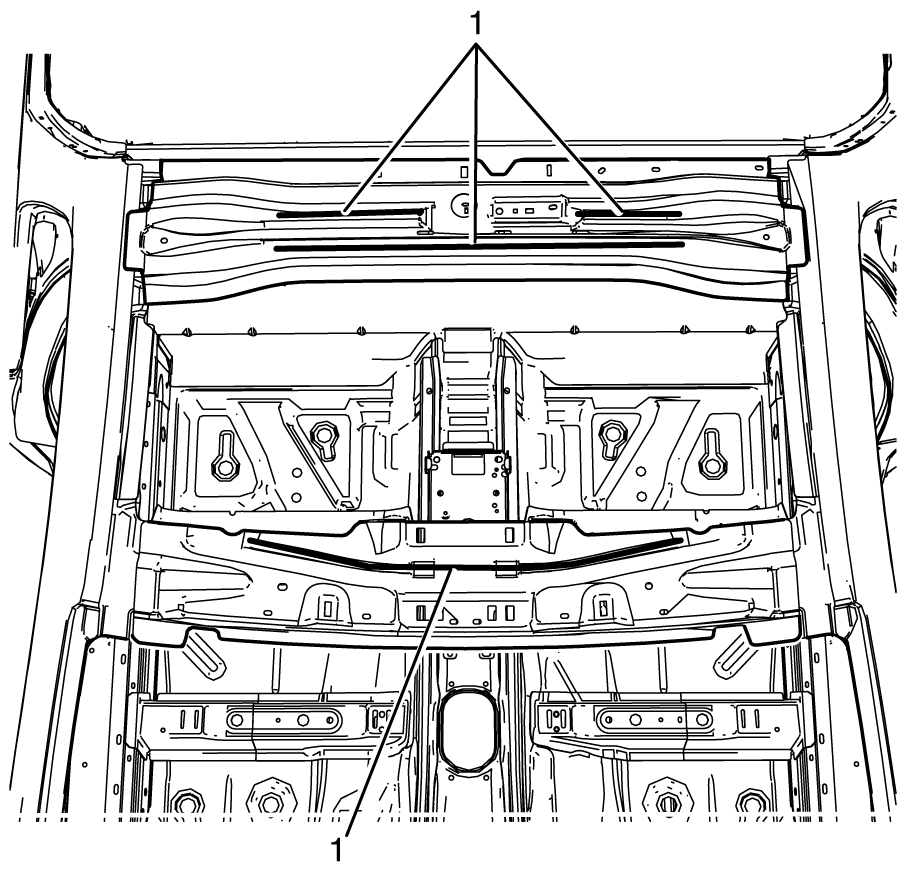
Important: Heating the 'anti-flutter' adhesive softens it making it easier to cut through.
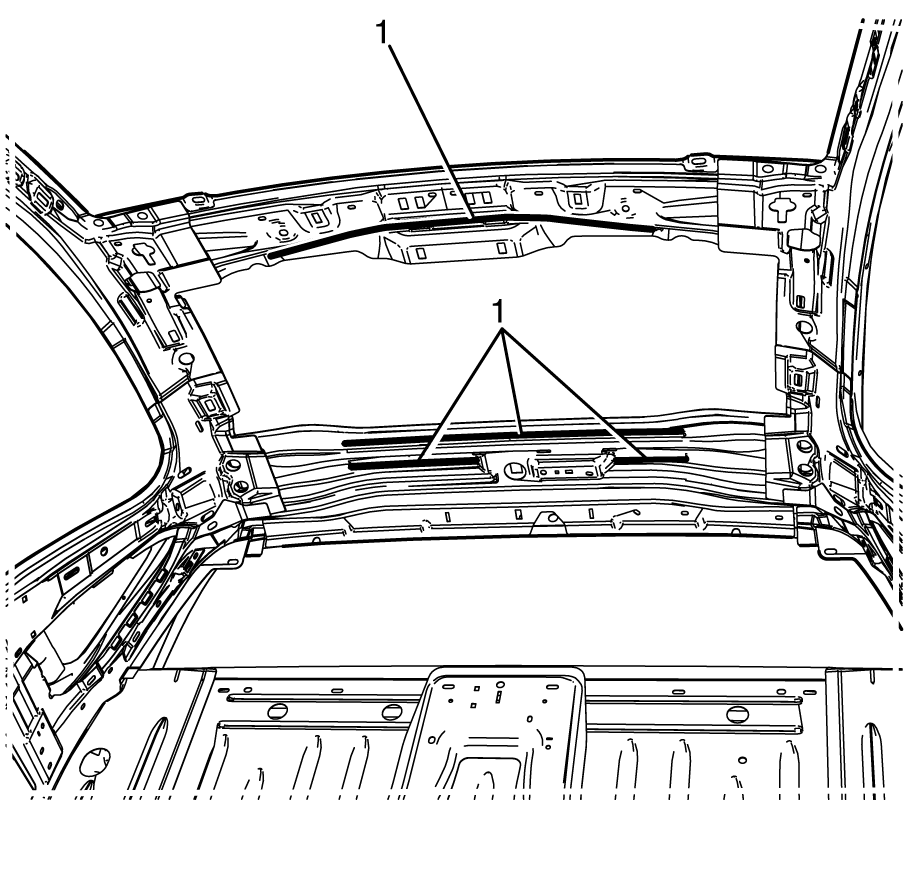
Important: The 'anti-flutter' adhesive (1) is between the roof bows and the roof outer panel.
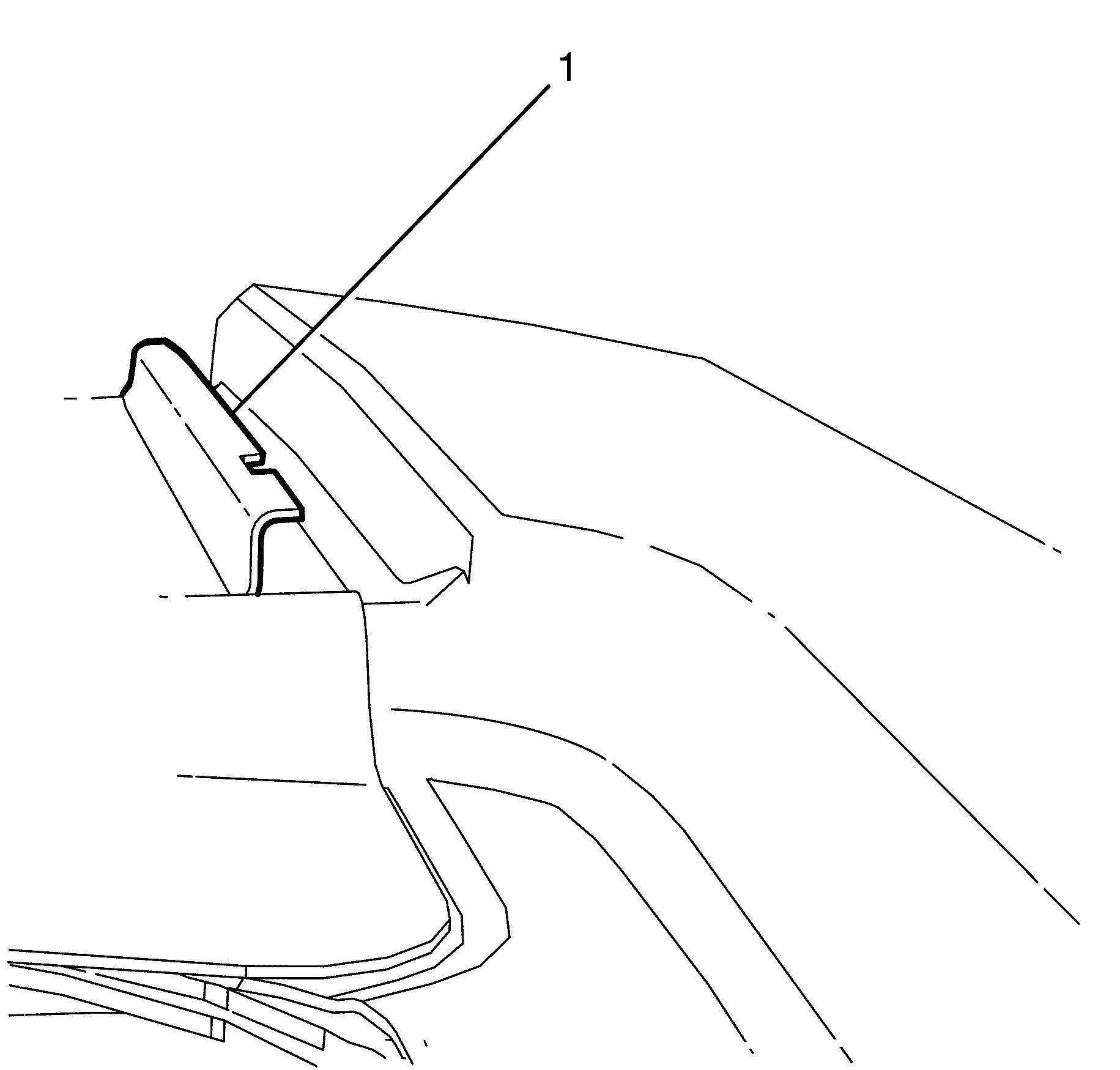
Installation Procedure
- Drill 8 mm (5/16 in) plug weld holes as necessary in the locations noted when disassembling.
- Clean and prepare the mating surfaces of both parts of the body side panel assembly.
- Clean the remaining anti-flutter adhesive from the front, centre and rear bow surfaces.
- Drill 8 mm (5/16 in ) puddle weld holes in the NEW roof outer panel in the locations to be puddle welded.
- Apply two full beads of approved adhesive to the roof rear header (2).
- Apply a full bead of approved adhesive to the roof front header (1).
- Apply approved adhesive to the mating surfaces of the roof panel and body side panel (1).
- Position the NEW roof outer panel to the vehicle.
- Inspect the fit.
- Clamp roof outer panel into correct position.
- Weld the roof outer panel on to both sides of the vehicle (1).
- Weld the roof outer panel to the vehicle (1).
- Apply the sealers and anti-corrosion materials to the repair area, as necessary. Refer to Anti-Corrosion Treatment and Repair .
- Paint the repaired area. Refer to Basecoat/Clearcoat Paint Systems .
- Install the roof weld joint reveal moulding. Refer to Roof Weld Joint Reveal Molding Replacement .
- Install the rear window. Refer to Rear Window Replacement .
- Install the windshield. Refer to Windshield Replacement .
- Install the headliner. Refer to Headlining Trim Panel Replacement .
- Install the dome lamp assemblies. Refer to Dome Lamp Replacement .
- Install the rear quarter upper trim panel. Refer to Body Side Rear Trim Panel Upper Trim Replacement .
- Install the body hinge pillar trim panel . Refer to Body Hinge Pillar Trim Panel Replacement .
- Install the windshield pillar moulding. Refer to Windshield Pillar Garnish Molding Replacement .
- Remove the tape from the corners of the panels and adjacent surfaces.
- Connect the negative battery cable. Refer to Battery Negative Cable Disconnection and Connection .
- Enable the SIR system. Refer to SIR Disabling and Enabling .
Important: Spot welding is the preferred method for attaching panels and should be used whenever possible. A plug weld should only be performed where spot welding is not possible.
Important: If the location of the original spot weld holes cannot be determined, or if structural weld-thru adhesive is present, space the puddle weld holes every 32 mm (1¼ in).
Important: Follow the adhesive manufacturer's instructions during the assembly process. Heat must be applied as per the manufacturer's specifications to cure the adhesives and to expand the sealing baffles.
Important: Secondary sealer must be applied to the perimeter of all flanges. Secondary sealer must be applied to all welds/joints that were originally covered by secondary sealer.
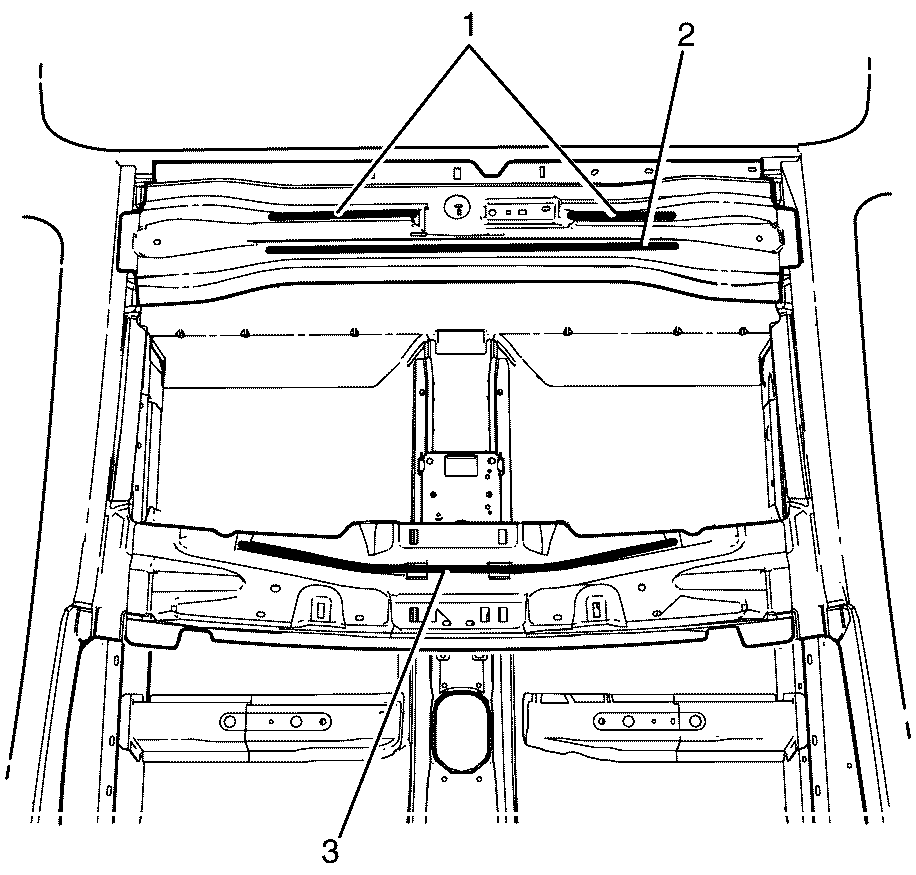
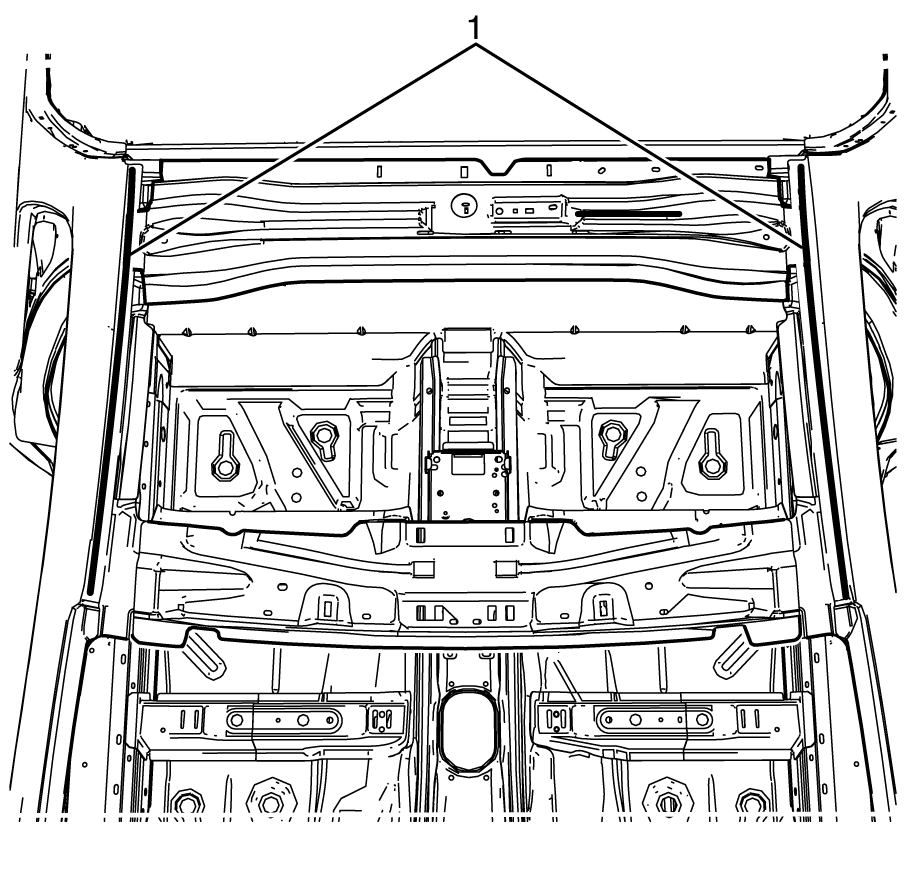
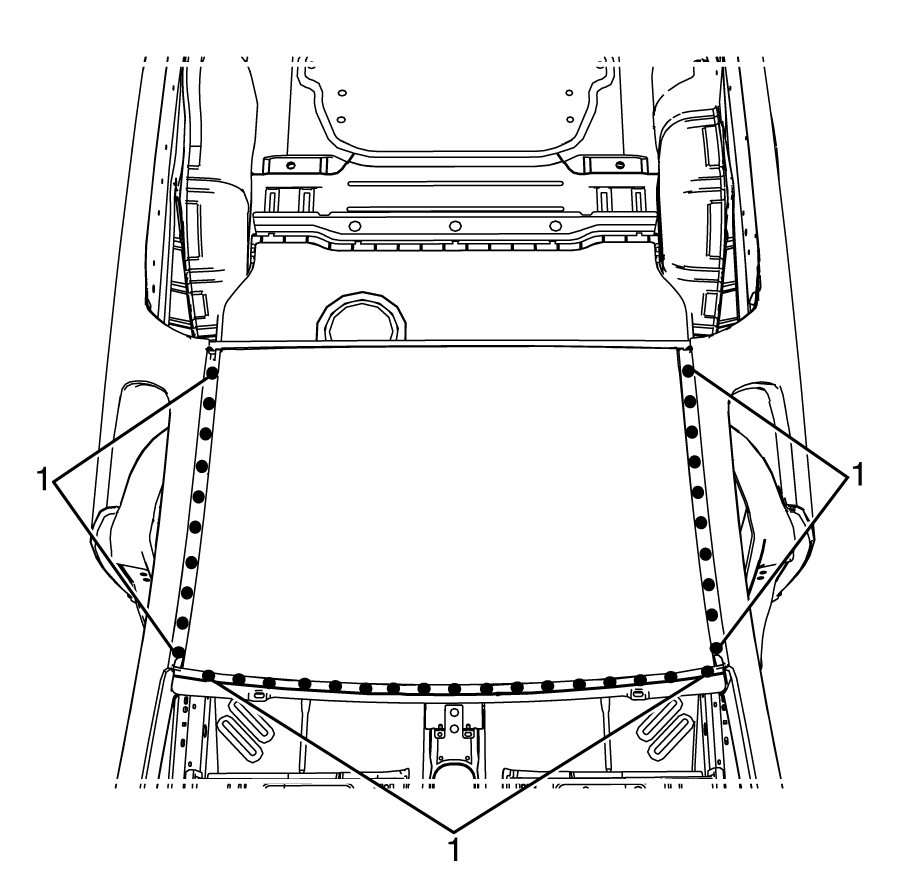
Important: Excessive heat may cause panel distortion. Care must be taken to avoid excessive heat absorption into the roof outer panel when welding.
